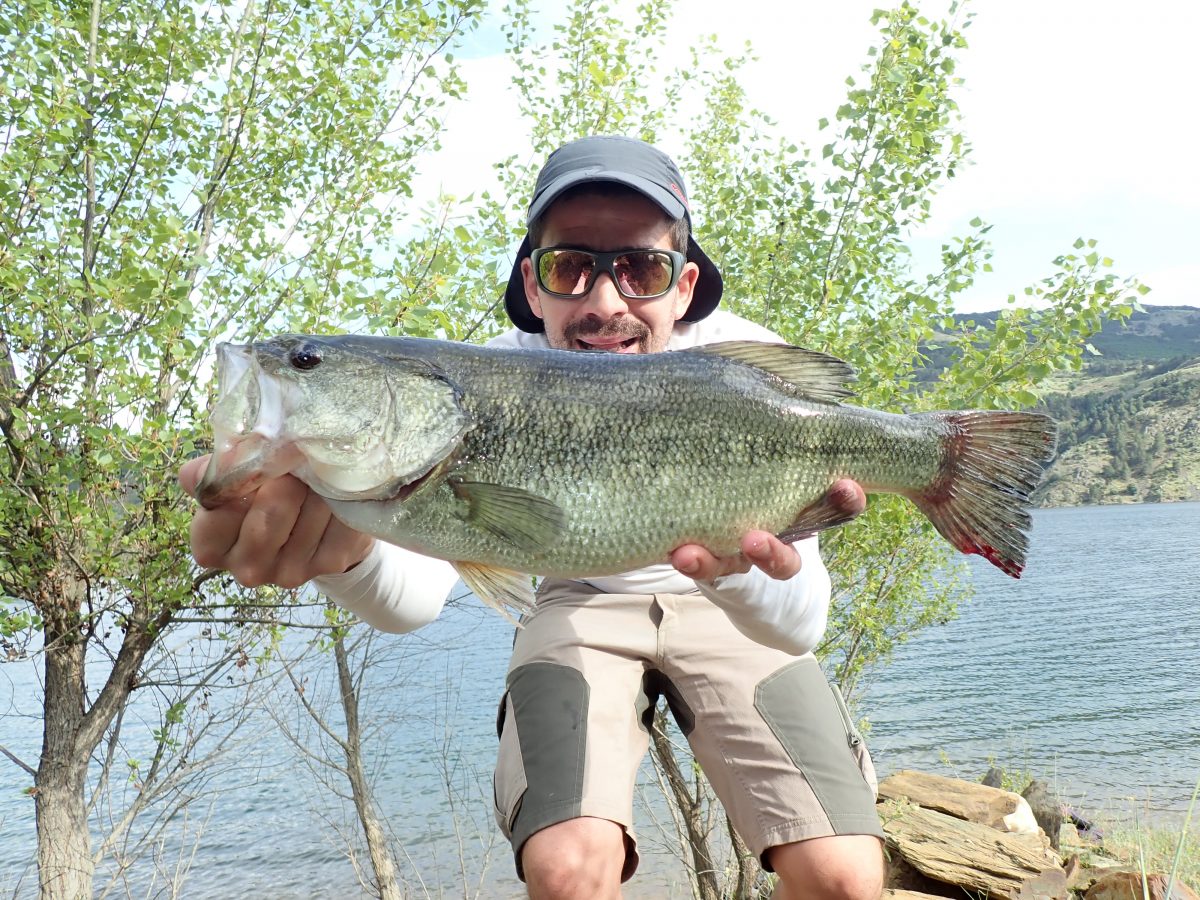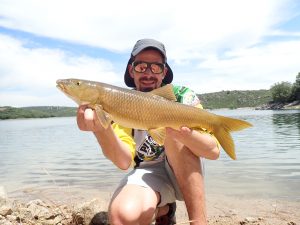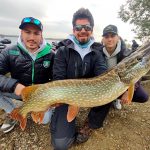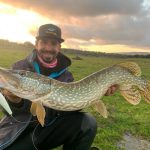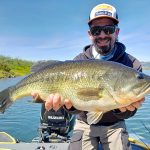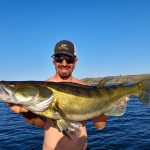Characteristics of Atazar lake
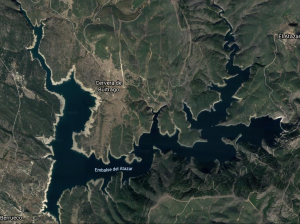
With a capacity of 426hm3 and a surface area of 1070 hectares, Atazar lake is the largest in the Community of Madrid. Located at an altitude of more than 800 metres, it is characterised by its very clear and cold waters, which are discharged directly from rivers and streams in the mountains.
The reservoir is located in a really beautiful environment, rich in fauna and vegetation and is one of the areas of the community with less human impact at the level of infrastructure, buildings, etc. Its main uses are supply, irrigation and electricity, although it also has recreational uses in terms of fishing and sailing (there is a sailing club in Cervera de Buitrago).
Bottom composition and structures
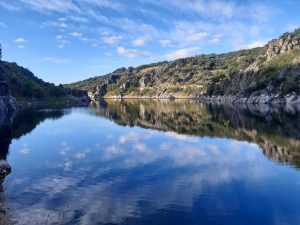
At the bottom of the reservoir there are sandy areas where the mother rock is granite or quartzite alternate with other areas where the bottom is composed of shales and schist. We find naked rock in a very important percentage of the bottom of the reservoir, which limits the accumulation of organic matter and food.
The area of Berrueco and Cervera is very sandy and there are large beaches dotted with rounded rocks and some cutting areas. Towards the dam, however, we find much more cut and boxed areas, in which we find some points and where slates and schists predominate.
In general it is a very boxed and deep reservoir so the “living” area for the fish is certainly reduced for a reservoir of its size.
Vegetation and cover
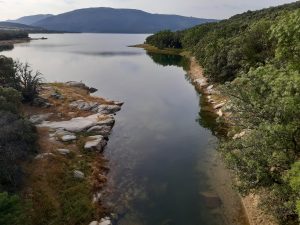
We can find several areas with submerged trees that appear according to the level of the reservoir. As the reservoir is so enclosed, the variations in height are very large, which makes the proliferation of underwater vegetation very difficult. Only at the mouth of the Riato river and in some streams can we find some underwater plants.
The submerged trees are mainly holm oaks and offer good cover for the pike and black bass that live there. However, in general it is a fairly “bare” reservoir in which there is not much cover of plant origin.
Main fish species
Atazar lake is not noted for its abundance of predators. Although the bleak has been in the reservoir for several years now and its densities are important, the configuration of its banks and the fact that the water is really cold in winter make it difficult for them to proliferate. The significant changes in level during the spawning season do not favour good results either.
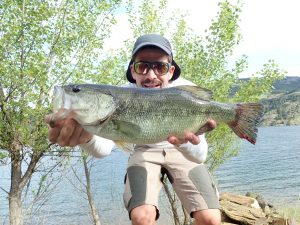
However, despite its low density, it is a reservoir famous for its large Black bass and pike
- Pike. The reservoir was built in 1972 and pike have been inhabiting its waters for decades. There is not a great density of them, although a large percentage of the shores are inaccessible or impassable so it is not easy to know their true potential either. However, very large pike have been caught well beyond the meter barrier.
- Black bass. There is not a high density, although it is a relatively common fish in the reservoir and its average size is rather small,

Barbel from Atazar lake below half a kilo. The catch of fish over one kilogram is already commendable, although sometimes fish weighing well over 2 kilograms are caught.
- Trout. Its catches are occasional and it is by no means an abundant predator in the reservoir.
- Barbel. The barbel has a very low predatory behavior, despite the abundance of bleaks. However, there are large specimens and sporadically we can catch some with artificial lure.
Prey species in Atazar lake
For only a few years now, the bleak has made its presence felt and its explosion has been incredible. During the spring and summer months it is difficult to find any area of the reservoir where we do not see bleak…
We also have a very large density of barbels of all sizes. Banks of small barbels abound and are one of the main prey of the large pike that inhabit these waters. There are carps, some eels, and finally, we should also mention the sunfish and the crawfish, whose populations, although not spectacular, also complement the diet of black bass and pike.
Access and navigation
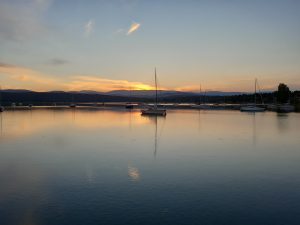
The reservoir is navigable but not motorized, according to the Tajo Hydrographic Confederation. In fact there is a sailing club in Cervera de Buitrago, however it is not entirely clear whether you can use a float tube or a pontoon for fishing, so I do not dare to say.
The accesses are the great limitation of this reservoir. We can access the shore by only 4 or 5 accesses, some of them quite far away from it so most of its banks are “virgin”. If we want to discover new areas, we will have no choice but to walk long stretches along the banks in general quite steep and sloping … It is essential to come with adequate footwear to avoid frights.

